
27 minute read
INTERVIEWING INTERROGATION
Looking Back Over Ten Years
by David E. Zulawski, CFI, CFE and Shane G. Sturman, CFI, CPP
Zulawski and sturman are executives in the investigative and training firm of wicklander-Zulawski & associates (www.w-z.com). Zulawski is a senior partner and sturman is president. sturman is also a member of asIs International’s retail loss prevention council. they can be reached at 800-222-7789 or via email at dzulawski@w-z.com and ssturman@w-z.com.
© 2011 wicklander-Zulawski & associates, Inc.
Our favorite magazine is ten years old. Ten years! These years have gone by so quickly. Congratulations to Jim Lee, Jack Trlica, and the LP Magazine staff for ten years of providing good reading and a visionary platform of communication for the industry.
Things seem to slip through the cracks in the rush of cases and day-to-day business. We poured over LP Magazine’s last issue, which contained a timeline of loss prevention for the last ten years. What a flood of memories—people, places, cases, new ideas. What a ten years it was. Thank you for letting this column be part of the magazine’s success. The publisher has kindly agreed to renew our column for another year.
Dave’s high school English teacher, Mrs. Polack, would be sooooo astounded! Having read Dave’s essays for four years, she was ready to take an early retirement. How often can you write Rule 19a at the top of a paper and not become bored. For the uninitiated, Rule 19a equals “trite.” According to Mrs. Polack, trite means “lacking in freshness or effectiveness because of constant use; [oh no] cliché.” We hope you have found something interesting or useful in our columns, despite Mrs. Polack’s critique.
We have written almost sixty columns, ranging from the interpretation of behavior to report writing and testimony. We have addressed questions from the field along with career development. Each of these areas helped us better understand the interview process and how it applies in our industry.
Admissions and Implications
From our readers’ comments, we found they particularly appreciated our commentary on the interview process. One of the areas that we discussed in some detail over several issues was the development of an admission and eliciting admissions of other employees’ theft activity. When we started to think about the development process we initially looked at it as the endgame of the interview. However, after we started to draft the column, our thinking on the topic became markedly different. Instead of the endgame of the interview, development is strongly tied to how the interview is begun and the strategies employed in the opening moments of the conversation.
For example, if the interviewer elected to use a direct accusation—accusing the dishonest associate of stealing what was known from the investigation—the resulting admission tended to be lower, because the associate knew or strongly suspected what the investigation had revealed. The direct accusation also failed to gather intelligence from the dishonest employee’s behavior about other methods of theft activity at the company. In addition, the direct accusation increased the level of resistance to an admission by encouraging the dishonest associate to make denials.
The direct accusation also revealed strongly what the investigator knew and, once it was revealed, it limited the interviewer’s ability to determine when the subject was still lying. By revealing his evidence early, the investigator helps the subject identify the limits of the investigator’s knowledge. The subject then knows what he may continue to conceal.
Another column addressed an additional problem area related to development—obtaining implications of other employees involved in theft activities. Previous research at Service Merchandise Corporation in the 1980s indicated about 20 percent of their employees had knowledge of other people stealing at the organization. In order to explore how an interviewer might increase his implications, we decided to examine our case files to determine the frequency of implications.
An examination of Wicklander-Zulawski and Associates case files indicated about 30 percent of employees made implications about another associate stealing. An interesting sidenote related to our examination of the files was the age dispersion of the employees who had knowledge of others stealing. We found that the employees in the 18- to 25-year-old range accounted for 72 percent of the people with knowledge. Those employees between ages 26 and 32 accounted for an additional 17 percent. When these two groups are combined they account for almost 90 percent of the employees who admitted knowing of another associate involved in theft activity. Clearly, one can assume that the greatest level of theft and knowledge of theft activity comes from the younger population. If we go back to Dr. Hollinger’s early research on employee theft, we find a similar high-risk group in the late teens through mid-20s identified as being thieves.
Statistics of Success for the Wicklander-Zulawski Method
Another important statistic came to light when we examined our files for audios and videos we had reviewed for companies. We were primarily looking for whether or not the interviewer had used our non-confrontational approach
in conducting the interview. We divided these 96 cases into the following categories: ■ Full W-Z method used, presented well with little or no errors:
N=44 ■ Partial W-Z method used, done well enough to count, but with a number of missing parts or errors: N=28 ■ W-Z method not used: N=22
When we examined these against whether or not the employee made an admission, we found that using either the full or partial W-Z method resulted in a confession 68 percent of the time. Unfortunately, we did not have the complete case facts relating what the investigator knew prior to the interview, so many of these could have been cold or implication cases—as a result, the actual confession rate may be much higher.
Those investigators using their own methods obtained a confession only 27 percent of the time and no confession 73 percent of the time.
Interestingly, we also found those interviewers using the W-Z method had admissions three times higher than those who got a confession using their own interview styles. Also, those interviewers using the W-Z method had confessions disclosing a much wider range of thefts and frauds types, implications, and policy violations then the non-W-Z method interviewers.
Promoting Yourself as a Business
Another column dealt with promoting the business. Think of yourself as a business; you are one in every sense of the word. You have a balance sheet with money coming in and out of your checking account, as well as the marketing and sales of your product—you.
There are three keys when promoting a business. First is having a marketing plan that actively brands you as someone who can perform. Number two is sales; selling yourself through your efforts and performance to provide a recognizable return on investment to those interested in you. Finally the key to it all is writing. Each report, resume, or email provides the reader with an indication of who you are and the quality of work you will perform. A poorly written report or resume reflects on who you really are.
A close fourth key in promoting a business is to associate yourself with or hire the best people you can find. Associating yourself with the best performers will make you a better employee and investigator. Hire someone who is capable of taking your job. Not only is it smart to create a succession plan, but it will also keep you on your toes and running.
The Future
Our next column is going to deal with an area we have never written about before, which is the history of interviewing. We are presenting at RILA in April on the history of interviewing. How did we get to this point using these techniques? While attempting to answer that question, we will also try to predict the future of interviewing in the coming decades. How might the interview process evolve over the coming decades?
If you happen to be at RILA, we would love to have you join us while we take a historical look at the past and predict the future. For those of you who may not be able to make the convention, we will summarize our thoughts in our upcoming columns.
Tired of losing sales to defensive merchandising?
Reclaim sales with the OPEN Merchandising System.
Our product facing system features built-in security and is available for pegged, pushed or gravity fed products. Protect and promote your critical products with the OPEN System.
The results are in!
Sweep sounds alarm
Store staff awareness Notification via pager
MERCHANDISING SYSTEM • Up to 88% reduction in shrink • 6 month - 8 week ROI • Double-digit increase in sales
Contact us:
info@intelligentlossprevention.com www.intelligentlossprevention.com 800.747.4384
Cover feature
loss prevention IN MexIco THE CHALLEnGES oF
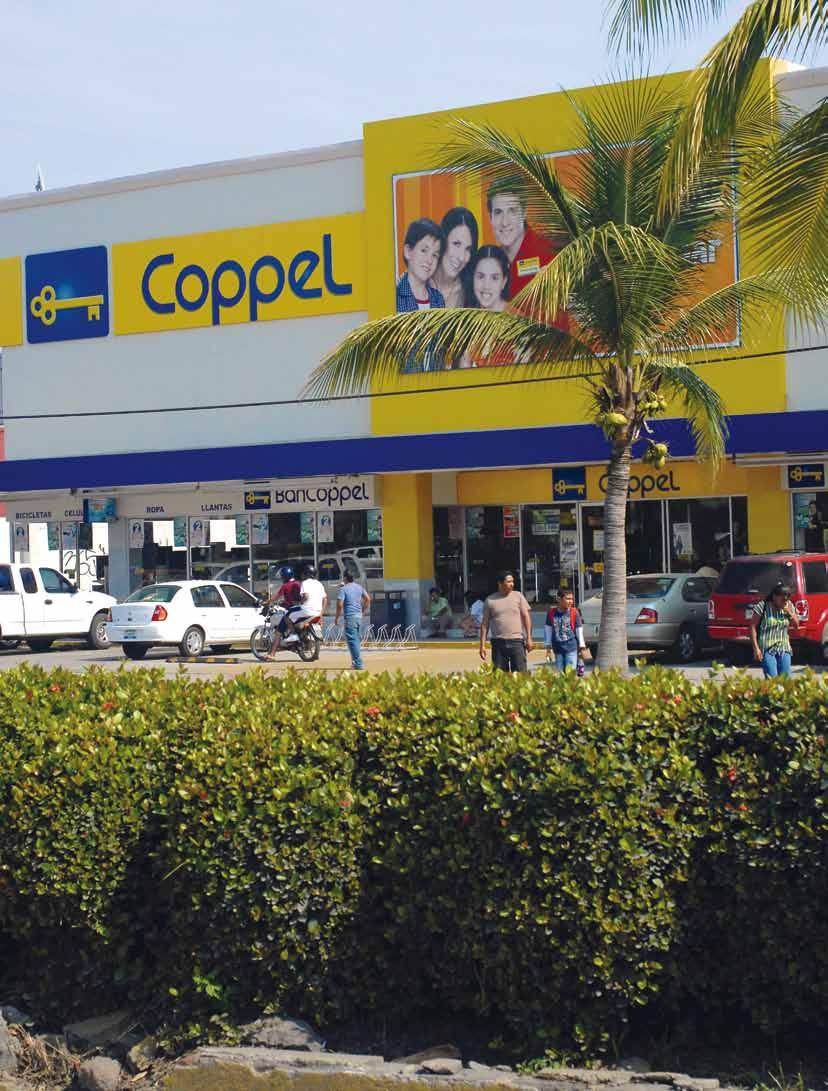
By William A. Alford
In October 2010 I was asked to speak at the annual LP conference sponsored by ANTAD Mexico, Asociación Nacional de Tiendas de Autoservicio y Departamentales, or National Association of Supermarkets and Department Stores. Traveling to Mexico City, where the conference was held, was quite a treat since I had never been to Mexico City.
While I was very aware of the escalating drug-fueled violence in Mexico, I was not worried at all about making the journey. However, many of my friends and family expressed concern, which prompted me to seek out others who were familiar with the Mexican culture and customs and day-to-day living experiences.
At the October ASIS International annual seminar in Dallas, I had my opportunity when I was seated at a table with two Mexican security executives who live in Mexico and work for a U.S. auto manufacturer. When I expressed my family’s concern, I was expecting to receive reassurances that the fears were overblown and that I had nothing to worry about. The executives were quick to agree with me that I should not have any safety issues in Mexico…if I just practiced two common sense rules:
Rule 1—They said, “Carry two wallets on the trip to Mexico. Keep most of your cash and credits cards in a wallet in your room safe. It is okay to carry the second wallet with you, but with only a small amount of cash and maybe one credit card. That way, you can give a robber something so they leave happy and do not hurt you.” At this point, I was not feeling very assured.
Rule 2—“Only ride in taxis that the hotel calls for you. Or if you must hail a taxi yourself, only get in a taxi that other passengers are getting out of.” When I asked why, the executives calmly stated that there were many taxi drivers who would take you to a back street where their partners were waiting to rob you. The executives also assured me that it was okay to get into a taxi that other passengers were getting out of if they did not look scared or frightened, which meant they probably were not robbed. While these recommendations were not very reassuring and heightened my anxiety, my walks around the downtown area of Mexico City were without incident. I have since found out that these issues with taxis in Mexico City have been going on for years. Like any large urban city anywhere in the world, travelers can be victims of crime if they are in the wrong place at the wrong time and don’t use common sense. [See “Protecting the International Business Traveler” July-August 2008.]
Unique Challenges
My conversation with the Mexican security executives provided me a glimpse into the unique challenges faced by retailers in Mexico. The headlines reflect a country plagued by violent crime and bloody gang turf wars. Even the long “off limits” tourist areas are feeling the effects. Last year, thirteen people were killed in and around the Mexican beach resort of Acapulco. Five of the victims killed were police officers and of the other eight victims, four were beheaded.
Kidnappings, gang assaults on businesses, cargo hijackings, brazen daylight robberies; these are just a few of the unique challenges facing LP executives in Mexico. However, coupled with the challenges comes political corruption that is beyond comprehension here in the U.S. Policeman are either part of the gangs that rule the streets or are so poorly trained and under paid that their effectiveness is minimal in assisting with retail-related crime.
Worse, if the robbers and criminals are arrested, corruption within the judicial system allows the criminals to receive a greatly reduced sentence or escape prosecution altogether.
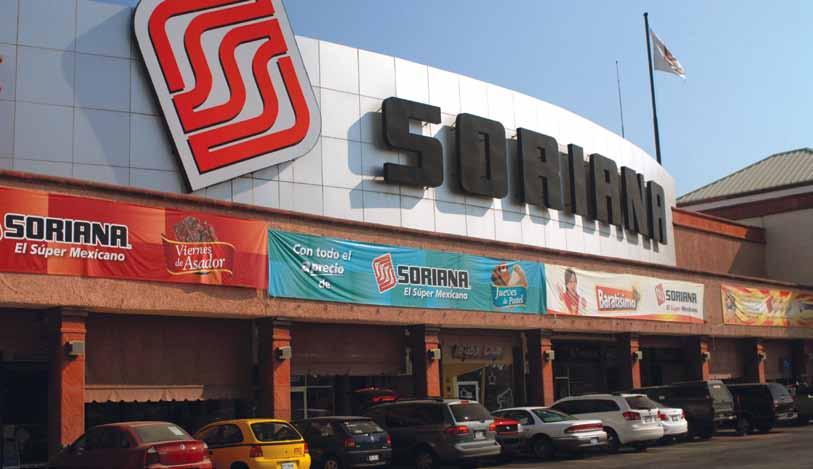
One Mexican retailer is fighting back against crime using advanced technology that helps identify the criminals before they strike. In all areas of the store, CCTV is utilized. However, in select high-risk areas, the store additionally utilizes facial-recognition technology to identify potential threats.
According to one LP executive in Mexico, “Crime is going to happen. The challenge we face is how do we minimize the loss and the risks to customer and employees?”
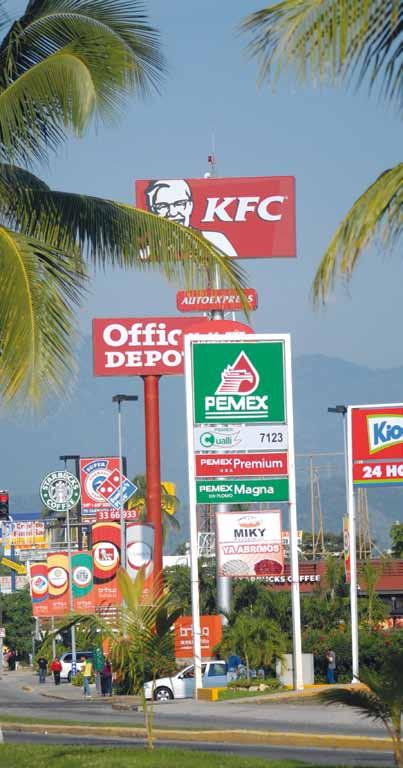
ANTAD Conference
These and other topics were highlighted at the ANTAD LP conference in Mexico City. The conference was a first-class affair and rivaled many LP conferences in the U.S. The conference was broadcast via radio and podcast across Mexico. Also, a professional videographer filmed the entire conference in order to capture the valuable information on the ANTAD website for their members. Dr. Richard Hollinger of the University of Florida and I were the only two speakers from the U.S. Real-time translation services were provided to the attendees during our presentations.
Attendees at the ANTAD conference were from a wide range of retail segments, from small local chains to national chains with thousands of stores. Also represented were many American retailers, including Walmart and AutoZone. The vendors and suppliers that displayed their services and products in the vendor court were a mix of Mexican companies and a few U.S. companies, including Alpha/Checkpoint and ADT.
While the conference reminded me of similar events in the U.S., the challenges and issues faced by the LP executives of Mexico certainly make our problems here pale in comparison.
One of the most popular speakers was a federal judge who spoke about her very personal fight against gangs and crime. Several years earlier, she was trying a case that involved a gang member. To persuade the judge to dismiss the case, the gang targeted the family of the judge and kidnapped and murdered the adult son of the judge. The judge was devastated at the loss of her son, but refused to be intimidated. Her strength, courage, and resolve led to the conviction of the gang member and the passage of new law against this type of crime. She received a standing ovation at the end of her presentation.
As with most conferences, the opportunity to network with peers and share best practices was extremely beneficial. The LP executives shared their philosophies and opinions about the role of LP in retail businesses in Mexico today.
The LP Profession in Mexico
Many retail executives of Mexican-owned companies view LP as a necessary evil and have little respect for the role. Carlos Lopez of AutoZone provided several theories for the reason LP is not valued in Mexico. “Traditionally, many of the LP personnel, even at the highest levels, are former military personnel or from a law enforcement background. They want to ‘catch the bad guys,’ which is what they are most comfortable with, and they have not been provided training and education on the core business for whom they work nor have they received education on LP best practices. Therefore, much of what they do is reactive and viewed as security, not true prevention of loss.” The situation sounds very similar to how our industry was viewed in the U.S. several decades ago.
Lopez began his career in operations with Walmart, which provided a very valuable education on the intricacies of operations. According to Lopez, “To truly make an impact on the bottom line of any retail chain, LP must be a proactive and integral part of the organization and understand all aspects of the operation from management’s point of view.”
During the conference, Lopez stated that he and his fellow Mexican LP executives desperately want to bring specific U.S.-based LP training and education resources to Mexico, such as Wicklander-Zulawski interviewing training, the LPQ and LPC certification programs, as well as LP Magazine.
When asked about LP philosophies, an LP executive for a major department store stated, “A true LP executive must be a business person and understand the intricacies of the operation and, most of all, understand that the company is in business to make a profit, not to provide LP personnel with a place to work.”
ANTAD and their loss prevention committee are making great strides to promote this philosophy through education of the LP community as well as educational programs about LP at other ANTAD retail executive conferences. Francisco Martin, director of program development for ANTAD, has a burning passion for LP and truly believes that retailers in Mexico need to embrace prevention. “Our goal at ANTAD is to educate, inform, and support our retail members in all aspects of their operation. LP is one of the key components to increasing profits and protecting assets, so at every opportunity possible, we stress the importance of having LP best practices in place.” [See sidebar page 24.]
Some of those best practices include life safety measures to keep employees and customers safe from harm. This is an especially critical initiative due to an incident that occurred in November 2010 at a Coppel Department Store in the city of Culiacan in Northwest Mexico. Coppel has over a thousand department stores throughout Mexico.
The incident involved the death of six workers who were killed when a fire engulfed the store. It was during the night when the store was closed, and employees were stocking the store and performing inventory. According to news accounts, the doors were locked and fire fighters could not enter the store in time to save the employees on the upper floors of the three-story building. Vinyl substances, plastics, and other products that burned in the fire gave off smoke that killed the store employees. Mexico’s labor department says there were no fire detectors or emergency exit
continued on page 22
How the future looks is up to YOU.
IP video surveillance is constantly evolving. Make sure you’re able to take advantage of all features available today without locking yourself out of all the opportunities coming tomorrow - with Milestone’s true open platform solution.

Milestone XProtect® IP video software supports the widest choice in cameras and seamlessly integrates with your Point-of-Sale system to catch shoplifting, vandalism or theft. Combined with transaction data, XProtect helps you resolve errors and fraud at the checkout. And Milestone future-proofs your investment with true hardware and software integration independence – enabling you to cost-effectively adopt tomorrow’s innovations.
Visit Milestone at RILA booth #127 or www.milestonesys.com
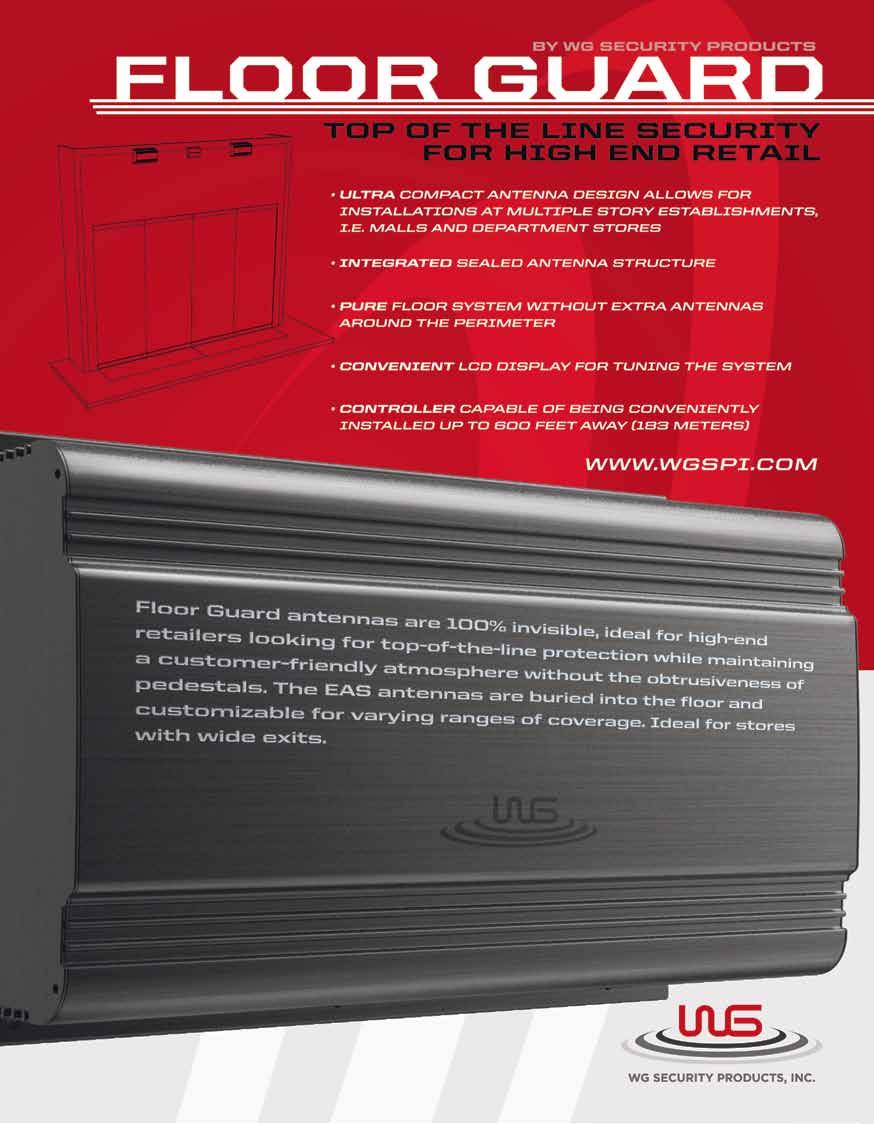
continued from page 20
signs in the store. Coppel executives were quoted as saying that the supervisor in the store had a key and should have let the workers out. Coppel, which did not have an LP department at the time of the incident, is now creating one.
Violent Crime
But the overwhelming issue facing retail LP executives in Mexico is violent crime, which is in the news and creating a climate of fear in the resident population, visitors, and business community. Executive kidnappings have forced LP executives to become expert in providing executive protection for their management team. Such kidnappings are not for political reasons, but for plain, simple greed.
AutoZone’s Lopez stated that LP has come a long way over the years from when he first started in the business. “Back then, we did not even have executive protection programs in place. Now, every company must have a plan to keep their executives safe since kidnapping is a very real threat to the executives and the company.”
One of the largest convenience store chains in Mexico is OXXO (pronounced O-X-O) with over 8,000 stores across the country. As one can imagine, robbers who look for quick access to cash frequently target OXXO stores. Robbers with weapons ranging from handguns to assault rifles will burst in and demand cash. According to LP Director Pedro Dávila, “We know that we cannot stop the robberies altogether, but we can take proactive measures to reduce the risks to our employees by minimizing the amount of cash available to the robbers.” While this does appear to reduce the losses at OXXO, it is somewhat disheartening that it simply drives the gangs to other retailers.
This philosophy seems to be pervasive among the LP executives in Mexico. Another LP executive who did not want to be named, stated that one of his main goals is to allow the robbers and thieves to get away with a minimal amount of cash or product. But again, he was quick to point out that the threat of violence requires that the robbers and thieves be permitted to leave with something. “If we lock every item down or put it behind steel-reinforced cases, the criminals will just escalate their violence until they can get something during the attack.”
The chain where this particular LP executive is employed has some very unique LP merchandising strategies for their high-end products that allows some modest amounts of merchandise to be taken while securing the vast majority of product. For obvious reasons, the specific items where this merchandising strategy is employed cannot be identified.
Of course, every LP executive has an overwhelming desire to keep their employees and customers safe during any attacks. The Mexican LP philosophy, like that in the U.S., is that the attackers should never be confronted so that they will leave as soon as possible without harming employees or customers; again, minimizing the loss and getting the attackers out as quickly as possible. While most agree that employees should never fight or resist an armed robber, OXXO’s Dávila , frustrated with the
AutoZone’s Lopez stated that LP has come a long way over the years from when he first started in the business. “Back then, we did not even have executive protection programs in place. Now, every company must have a plan to keep their executives safe since kidnapping is a very real threat to the executives and the company.”
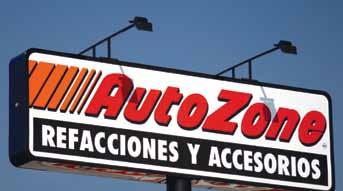
seemingly never-ending attacks by gunman lamented, “Perhaps if our employees were allowed to carry weapons, the robbers would think twice about robbing our stores.” [AUTHOR’S NOTE: As this article was being written, four Walmart employees in Layton, Utah, were terminated for overpowering and disarming a shoplifter who pulled a gun when confronted by the employees. The terminations were based upon Walmart’s policy entitled “Investigation and Detention of Shoplifters,” which instructs employees to retreat if an individual brandishes a weapon. This is an age old dilemma. Employees who successfully disarm assailants are viewed by the public as “heroes” while their employer views the actions of the employees as negative because the employees put themselves and the public in harm’s way. In this recent case, the actions of the employees resulted in a positive outcome. However, had they failed in their counterattack, the outcome could have been devastating. This dilemma will surely rear its head again and again.]
Technology
One Mexican retailer is fighting back against crime using advanced technology that helps identify the criminals before they strike. In all areas of the store, CCTV is utilized. However, in select high-risk areas, the store additionally utilizes facial-recognition technology to identify potential threats.
“If a person is walking around an area for a period of time, leaves and comes back within a given period of time, our facial recognition program alerts our in-store LP staff,” stated the LP executive. The LP staff is highly trained on how to properly and effectively approach the suspected criminals in order to defuse the situation and prevent the attack.
continued from page 22

Another unique example of the effective utilization of technology by this particular retailer involves refund fraud. The philosophy of this retailer is much like Nordstrom here in the U.S.—good customers can return any and all products without a receipt or question. Except with this Mexican retailer, they do require the customer place his or her finger on a biometric scanner.
According to the loss prevention director, “We take the philosophy that all customers are good and treat them as such unless we identify them as otherwise.” This identification comes in the form of a proprietary database that holds the fingerprint of any customer or employee who has ever been arrested for crimes against the retailer. Just prior to a detained shoplifter or employee being transported from the store by the police, their fingerprint is taken, and the biometric information is entered into the retailer’s database. If a customer returning merchandise is in the database, they are barred from returning merchandise unless a receipt or proof of purchase can be produced.
But there are challenges in properly deploying technology in Mexico according to Carlos Agami Zaga, national sales director for Agasys, a supplier of CCTV and monitoring systems. “In Mexico, there are many companies like ours who believe in installing quality security systems and educating our customers on the properly utilization of their systems to its fullest to maximize their investment. However, many security vendors only want to install the system as quickly and as cheaply as possible with little, if any, instruction or direction to the retailer. The retailers who purchase these substandard systems are then hesitant to upgrade or change systems in the future for fear of wasting more money.”
Major Reasons for Crime in Mexico
Statistics exist that indicate that the rate of violent crime, including kidnapping, is decreasing in Mexico, and that these rates in other Latin American countries are actually higher than in Mexico. But this is of little solace to the LP executives charged with protecting profits and people in Mexico. The reasons for the unacceptable violent crime rate are many, but a starting point is the low-risk, high-reward scenario in Mexico. This is exacerbated by the socioeconomic environment not unlike other countries where the poor are getting poorer and feeling increasingly frustrated.
Secondly, as mentioned before, the police are under-trained, under-paid, and under-equipped to handle the escalating crime problem in Mexico. Mexico City’s urban population is estimated at 20 million, which is comparable with New York City. However, Mexico City’s police force is only two-thirds the size of New York City’s and policemen earn less than a quarter of what their U.S. counterparts earn. This may be why many officers turn to corruption to augment their pay.
According to stories from everyone from taxi drivers to LP executives, members of the police are themselves sometimes involved in criminal activities such as “shaking down” truckers and other motorists traveling on rural highways. But it is the
ANTAD Mexico
antaD Mexico, Asociación Nacional de Tiendas de Autoservicio y Departamentales, or national association of Supermarkets and Department Stores, is the primary retail trade organization in Mexico. antaD supports 101 retail chains in Mexico with over 17,000 retail locations and 650,000 employees. When you add in the vendor and supplier community that antaD supports as well, the number of employees they impact reaches well over 2.5 million people in Mexico. like trade organizations in the U.S., antaD focuses on education and training for their membership while also representing retail interest in governmental affairs and legislative matters. For example, Mexico has imposed a fee to retailers on the use of plastic bags, and antaD is attempting to help companies convert to alternative solutions, such as recyclable, ecologically friendly bags. an overarching initiative of antaD is to promote “sustainability and recovery” in the event of crisis situations, such as hurricanes, earthquakes, floods, fires, and other disasters. antaD is promoting retailers as critical to the Mexican infrastructure and the communities in which they serve when a crisis occurs. in order to help the communities, retailers must be given first consideration when deciding where to restore power. also, trucks sent by retailers with relief supplies must be allowed access into the affected areas. regarding loss prevention initiatives, antaD has developed an annual survey of the primary security concerns of the membership and last year, a phenomenal 80-plus percent of their membership participated in the survey. the survey mirrored many of the concerns in this article about violent crime and criminal activity, especially robberies, hijackings, and kidnappings. antaD is committed to the profession of loss prevention and the antaD loss prevention committee though the development of education programs and informational seminars and conferences for lp executives. By partnering with vendors and suppliers, antaD exposes lp executives to innovative technological solutions and cutting-edge tools that can help keep retailers profitable while protecting employees and customers in the challenging environment of Mexico.

maximize Cash Flow
Deposit Accuracy
Traceability
Integrated Cash Management
CSS treaSury SerIeS ProvIdeS CaSh management eFFICIenCIeS
• Increase visibility and “anytime reporting” – remote access management and immediate view of cash flow, with detail reports for accountability audits • employee self-service – increase cash management productivity with direct, authenticated and traceable employee deposits • Remote management – remote access management and support for software rollouts, updates, setup control and data retrieval or upload • P.o.s. and back office integration – track the flow of cash to the transaction level
VIsIT us AT The RILA show - BooTh 626
to move ahead
to learn more about products that can take your operations to a new level, please contact a CSS representative today at (800) 342-3033 x333 or visit us at www.remotecashcapture.net.
Security » Innovation » Service
©2011 CSS | 14800 S. mcKinley ave | Posen, IL 60469 continued from page 24
bribes and flow of easy cash that causes some members of the police to turn a blind eye or protect the criminals and even participate in gang activity. According to multiple Internet resources, the police are often presented with the option of choosing “Plata o Plomo,” which means they can either accept a bribe (plata = silver) or they will be killed (plomo = dead).
According to the Comisión Nacional de los Derechos Humanos (National Commission on Human Rights), only one out of every ten crimes is reported in Mexico. This is due to lack of trust from citizens regarding the authorities. Furthermore, only one out of 100 reported crimes actually goes to sentencing. This means that one out of every 1,000 crimes is punished. There are roving gangs of armed young men attacking businesses with impunity because the risk of getting caught or punished is far less than the rewards they reap from robberies.
Thirdly, and probably the core of Mexico’s crime problem, is the rampant drug trafficking fueled by the insatiable hunger for cocaine, heroin, and marijuana in the U.S. With the untold billions to be had by the drug cartels, comes corruption of every level of civil service, government, and political leadership.
Advancing LP in Mexico
Of the many people interviewed for this article, several refused to be identified for fear of reprisals…and rightfully so. One LP executive relayed a case where they caught an employee stealing and had a solid case. When the case was presented to the magistrate, the magistrate chastised the retailer for bringing the case to court and dismissed the charges. The magistrate was not required to explain why the charges were dismissed.
Executives told of other cases that made direct connections between local politicians and criminal activity, such as hijacking of trucks, cloning of credit card numbers, and others. However, for the sake of the many retail companies who relayed information, the specifics of these disturbing stories cannot be shared publically.
Suffice it to say that ANTAD and their LP committee are continuing to advance the role of retail loss prevention in Mexico with education, training, and awareness balanced with the overwhelming need to protect property and people in an extremely challenging environment.
In just the few short months since October 2010, some of the “wishes” of Carlos Lopez of AutoZone have started to take shape. Wicklander-Zulawski conducted their first Spanish training class in November 2010. LP Magazine is in discussion with ANTAD about providing editorial content for a web portal project in Mexico. And the Loss Prevention Foundation is exploring the feasibility of offering their LP certification programs in Spanish.
WILLIAM A. “BILL” ALFORD is president of International Lighthouse Group, a risk management firm specializing in the identification and prevention of risks, threats, and liabilities that affect the retail industry. He is a nationally recognized speaker and consultant and the author of numerous articles on LP in the retail sector. Alford can be reached at 704-841-7759 or via email at bill@billalford.com.





